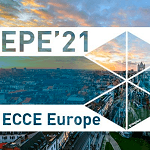Nos publications scientifiques
On the specificities of Medium Voltage cable systems for DC applications
This paper discusses the relevance of system approach vs component approach in the qualification of MVDC cables and accessories.
Non-intrusive space charge measurement on DC cable using the thermal step method
This article presents a technique for non-intrusive measurement of space charge directly in cables using the thermal step method.
One approach to methodology for research and development of HVDC cable accessories
This paper presents one possible approach to research and development process created and utilized for HVDC cable accessories.
Solutions for the step-wise development of HVDC-based high power corridors
High voltage direct current (HVDC) is seen as the technology to implement those HPCs stretching long distances.
A simplified approach to model grid-forming controlled MMCs in power system stability studies
This paper validates a phasor model of a grid forming controlled Modular Multilevel Converter suitable for large AC grid dynamic studies.
Break-even distance for MVDC electricity networks according to power loss criteria
In this article the MVDC break-even distance (with respect to AC distribution) is calculated according to the overall energy efficiency criteria.
Methodology to obtain the specifications and perform the sizing of a power flow controller for meshed HVDC grids
This work proposes a methodology to obtain the specifications, select the most suitable converter structure and perform the sizing of an interline Power Flow Controller.
Modelling and Control of an MMC-HVDC Submodule with Energy Storage for Fast Frequency Response
Energy storage systems can be distributed in a modular multilevel converter (MMC) for the enhancement of HVDC converter stations.
Experimental study of an EMI reduction gate-driver technique for turn-off transition of 1.7 kV SiC MOSFET
This paper proposes a novel self-controlled SiC MOSFET gate driver circuit. This new gate driver proposes a dynamic gate-bias modification.
Functional needs and potential technologies, to enable the stepwise development of HVDC multi-terminal grids
The introduction of modular multilevel converters (MMCs) created a new momentum in the field of high voltage direct current (HVDC).





